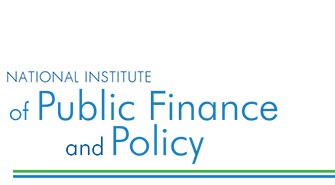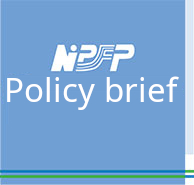Minimising Selection Failure and Measuring Tax Gap
R. KAVITA RAO, Director, National Institute of Public Finance and Policy, New Delhi, India. email:director@nipfp.org.in
|
Income tax evasion or tax gap is a widely recognized problem that costs governments throughout the world a great deal of revenue. If it were possible for the tax department to audit all returns filed and validate all the information used by all the taxpayers in the economy, it is to be expected that the tax gap would be reduced to zero. However, this is neither considered feasible nor desirable - the former since it would involve substantial administrative costs and the latter since it would be perceived as too intrusive by the taxpayer. The taxpayer too is more vocal in protesting against invasive tax administration by referring to it as “tax terrorism”. In this context, tax departments have been limiting their audit exercise to a fraction of the population.
In designing their audit strategies, therefore the departments will have two concerns.
1. Finding a methodology for measuring the size of tax gap – this would be a good indicator of the performance of the department where small gap would indicate a successful strategy.
The methodologies used in the literature for estimating the tax gap can be largely classified into two categories: the macro approaches and the micro approaches. Although both these approaches are appealing in the way they handle the issue of potential tax collection, the results rely heavily on the selection of appropriate macroeconomic determinants of the tax collection. Also, they provide no information with regards to probability that a filer has underreported.
Our Model: As an alternative approach, we proposed a methodology to estimate the tax gap based on the regular scrutiny assessment of tax returns carried out by the tax department. Since this is a regular exercise carried out by the department, using this data for measuring tax gap is not costly and will provide a ready and reliable estimate which can be improved upon with data flowing in year on year.
2. While reducing the gap is a concern, since there are compliance benefits for the tax department from being perceived as fair, it would be useful for the department to have a methodology for selection of cases for audit where it can minimize the possibility of harassment, i.e., the possibility of auditing an honest taxpayer.
Starting from the premise that the tax department selects a limited number of cases for audit, whatever be the mechanism by which the department selects these cases, there is a possibility of two kinds of errors or selection failures - selection of an honest filer who yields no additional revenue but generates a reputation of the tax department harassing people and, failure to select the potential under-reporter, resulting in loss of revenue to the tax department. Ideally, the department would like to minimise both kinds of selection failures.
Our Model: Using a maximum-likelihood procedure that corrects for sample selection bias, and the data on the scrutiny assessment exercise carried out by the income tax department, we estimate the model which |
relates the probability and extent of underreporting to information provided in the tax returns of the tax-filers. Although it is not possible to exactly pinpoint the under-reporter through the proposed model, the prediction from the model can act as a guiding tool for minimizing the selection failure in a scenario where resources to carry out the scrutiny assessment is limited.
Thus, one component of our model assigns a probability to underreport for every taxpayer whereas the second part gives an estimate for the extent of tax gap due to underreporting by the tax filers.
Given the estimated model, we consider two alternative strategies for selecting cases for audit - one based on the (cut-off) probability of under-reporting alone and the second based on the “expected quantum of under-reporting”, which is the product of the probability of under-reporting and the estimated extent of under-reporting. The performance of these models are evaluated on the basis of the two parameters of interest - extent of incorrect selection indicating scrutiny of an “honest” taxpayer (type II error) and extent of additional revenue mobilisation. Based on the average of the outcome from 100 simulations, we observe that the selection based on the cut-off probability has lower type II error. While selection based on expected revenue gain shows a marginally better performance in the “gap covered”, the differences are not large.
Way forward
If the cases taken up for scrutiny assessment were to be randomly selected, the proposed model would provide a representative coverage of the entire set of returns. The estimated versions of this model can then be applied to the population data that is, the entire set of returns, both to select the cases for scrutiny assessment and to derive an estimate of the tax gap. With the arrival of the new set of data, the model can be re-estimated on the sample before applying to the population. This leaves space for correction from the past experiences of the scrutiny assessments in order to improve the predictive ability of the model.
Key points:
Reference
|




